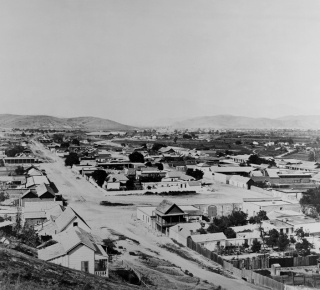In the late 19th century American hospitals are noisy, dirty places run by charities. Medical practice and hospital care is very different from what we expect today. Most Americans of all races are cared for at home by family and not in a hospital. Medical students learn the "art of medicine" by apprenticing with an experienced practitioner and accompany the doctor on his home visits.
In 1900 less than 5% of all U.S. births occur in hospitals. Children are born at home with family or close friends aided by midwife attendants. With the introduction of new drugs (ether and chloroform) and medical devices (forceps), middle and upper-class women expect the family physician to assist. By the end of the 19th century nearly half of all home births are physician attended. Hospital births are still primarily for the poor or women who do not have in-home assistance.
As Americans move from rural family-centered living to the city environment, medical care improves and skilled midwives are no longer in demand. There is a rapid shift from home to hospital births and by 1935 three out of four urban births occur in hospitals.







In the late 19th century American hospitals are noisy, dirty places run by charities. Medical practice and hospital care is very different from what we expect today. Most Americans of all races are cared for at home by family and not in a hospital. Medical students learn the "art of medicine" by apprenticing with an experienced practitioner and accompany the doctor on his home visits.
In 1900 less than 5% of all U.S. births occur in hospitals. Children are born at home with family or close friends aided by midwife attendants. With the introduction of new drugs (ether and chloroform) and medical devices (forceps), middle and upper-class women expect the family physician to assist. By the end of the 19th century nearly half of all home births are physician attended. Hospital births are still primarily for the poor or women who do not have in-home assistance.As Americans move from rural family-centered living to the city environment, medical care improves and skilled midwives are no longer in demand. There is a rapid shift from home to hospital births and by 1935 three out of four urban births occur in hospitals.